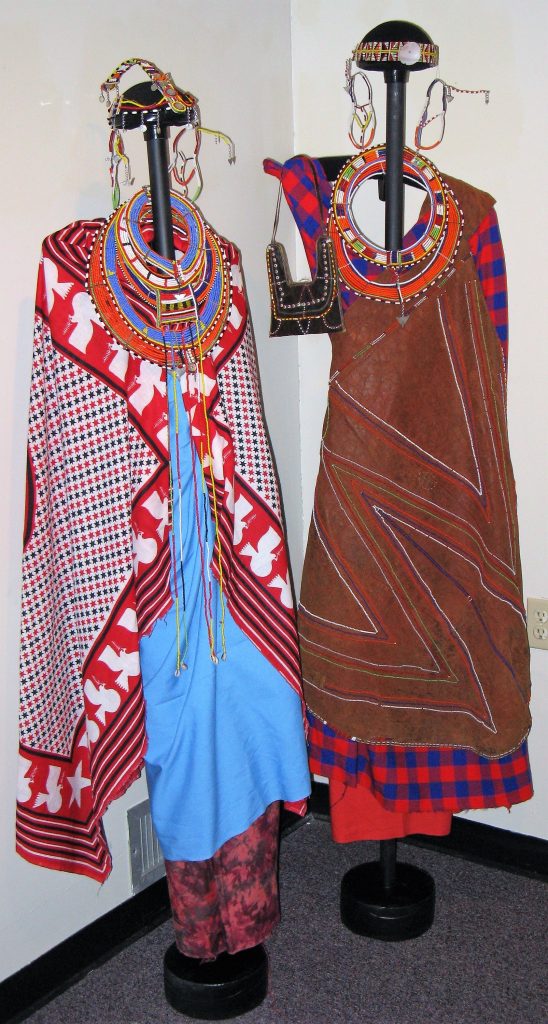Maasai
The pastoral Maasai people live in the grasslands of Kenya and Tanzania. Their society is structured around rites of passage, one of which is marriage. Young men in the senior warrior stage may not marry but can search for an appropriate bride and gain her family’s favor in order to arrange a future marriage. After passing from the warrior stage to that of junior elder, marriage becomes the first concern of the new elder who is now in his late twenties. Maasai women are considered eligible for marriage in their teens after recovering from their female circumcision, a practice which is now illegal in Kenya and is much less practiced now than even a decade ago.
The wedding ceremony for the Maasai is simple but the rituals embody many practices that are essential for community survival and cultural identity. Cattle are central to Maasai culture. They are a source of labor, sustenance, and wealth. When a couple weds, both the bride and groom are blessed and washed with milk and grass is tied onto their shoes and clothes. Then, the couple and the bride’s family share ceremonial honey beer, made from the suitor’s bride price gift of honey. Honey and milk are two important items in the Maasai diet and symbolize fertility and prosperity in the wedding ceremony. Afterwards, the bride and groom begin their trek to the groom’s family home where they will reside. As the groom clears the path, the bride tries not to look back at her own home in fear that she may turn to stone.
bride and groom begin their trek to the groom’s family home where they will reside. As the groom clears the path, the bride tries not to look back at her own home in fear that she may turn to stone.

Leather Cape
Traditionally, both the bride and groom wear tanned hide capes such as the one worn here by the groom. Since the 1960s, leather capes have been increasingly replaced by manufactured fabrics, like the ones worn by the bride.
Beadwork
The Maasai often express their wealth through their colorful and intricate beaded jewelry. Both men and women wear these accessories that the women make as a social activity. For Maasai women, beadwork is not only a beautiful display of wealth, but it is also a testament to their skill as artisans. On the morning of the wedding, the mother of the bride shaves her daughter’s head and anoints it with lamb fat. Then the female family members of the bride gather to dress her and adorn her with the many accessories you see here. The bride wears not just her own beadwork, but layers on those contributed by other women in the community.
Bead Colors
The vibrant colors the Maasai women use in their beadwork have symbolic meaning to the group. The meanings can vary from village to village, but these are some of the most common.
Red symbolizes unity, bravery, and strength. It draws its meaning from the blood of the cows killed for communal festivals.
Blue represents the sky and water. It can also symbolize energy and hospitality.
Green is connected to the olari plant which stands for health. Like the plant, the Maasai grow tall and bountiful. Green can also represent the rich earth which feeds the Maasai people and their animals.
White symbolizes purity because it is the color of cow’s milk. Sometimes it can also symbolize health because of the nourishment milk provides.
Yellow represents growth or energy, and orange represents warmth and friendship. Yellow and orange can also signify hospitality. Yellow animal skins and orange gourds filled with milk are typical offerings to guests.
Black represents the unity of the Maasai people, but it can also symbolize adversity.
Look for these colors within the wedding costumes. Notice their distribution between the bride and groom’s outfits.
You can learn more about Maasai beadwork and create your own accessories with this Cultures Up Close activity.
